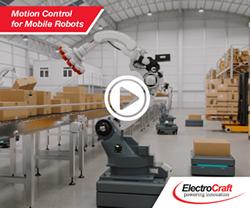NXT Robotics Unveils Rugged All-Terrain, All-Weather Outdoor Security Robot
Robotic Surgery a Key Factor Driving Down Hospital Length of Stay
Rise of Robots: Boon for Companies, Tax Headache for Lawmakers
Six-legged robots faster than nature-inspired gait
EU wants ethical standards for robotics
Exhibition Charts 500 Years of Evolution of Robots
Ford invests $1B in robotics startup in driverless car quest
Raspberry Pi-powered arm: This kit aims to make robotics simple enough for kids
Deep-Domain Conversational Artificial Intelligence
Inside Amazon's robot-run supermarket that needs just 3 human workers
Robotics-focused ETFs see big gains, Trump could hasten trend
Development of a Hydraulic Drive High-power Artificial Muscle
Watch a new robot fly just like a bat
MIT Builds Invisible Fish Grabbing Robot
A robotic barista is now serving - really fast
Records 1111 to 1125 of 1431
First | Previous | Next | Last
Mobile Robots - Featured Product

